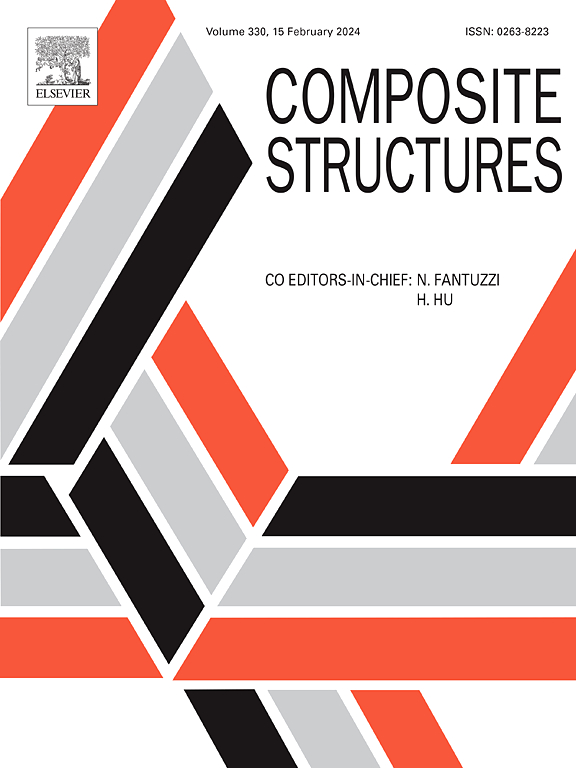Efficient RVE modeling for ellipsoidal particle- and short fiber-hybrid reinforced composites: Novel algorithms for overlap detection and geometric periodicity
IF 7.1
2区 材料科学
Q1 MATERIALS SCIENCE, COMPOSITES
引用次数: 0
Abstract
Particle- and fiber-reinforced composites are widely used in aerospace, automotive, and biomedical engineering. Finite element (FE) homogenization, based on the representative volume element (RVE), is an effective method for evaluating properties. This paper presents a novel method for constructing RVEs of the composites containing ellipsoidal particles and fibers (collectively referred to as fillers). A modified Random Sequential Absorption (RSA) algorithm is proposed, featuring a novel overlap detection algorithm for ellipsoid particles and fibers, a geometric periodicity algorithm, and several acceleration strategies (e.g., boundary sphere, envelope fiber, enhanced fiber overlap detection, and pre-overlap algorithms). These innovations significantly improve modeling efficiency and filler volume fraction while ensuring accuracy. The periodic boundary condition (PBC) and ABAQUS-integrated GUI plugin further enhance efficiency. PBC-based predictions validate the accuracy of the constructed RVEs for evaluating the mechanical properties of hybrid composites.
椭球颗粒和短纤维混合增强复合材料的有效RVE建模:重叠检测和几何周期性的新算法
颗粒和纤维增强复合材料广泛应用于航空航天、汽车和生物医学工程。基于代表性体积单元(RVE)的有限元均质化是评价材料性能的有效方法。本文提出了一种构建椭球粒子和纤维(统称为填料)复合材料RVEs的新方法。提出了一种改进的随机顺序吸收(RSA)算法,该算法包括一种新的椭球粒子和纤维的重叠检测算法、一种几何周期性算法以及几种加速策略(如边界球、包络纤维、增强纤维重叠检测和预重叠算法)。这些创新显著提高建模效率和填料体积分数,同时确保准确性。周期边界条件(PBC)和集成abaqus的GUI插件进一步提高了效率。基于pbc的预测验证了构建的RVEs用于评估混杂复合材料力学性能的准确性。
本文章由计算机程序翻译,如有差异,请以英文原文为准。
求助全文
约1分钟内获得全文
求助全文
来源期刊

Composite Structures
工程技术-材料科学:复合
CiteScore
12.00
自引率
12.70%
发文量
1246
审稿时长
78 days
期刊介绍:
The past few decades have seen outstanding advances in the use of composite materials in structural applications. There can be little doubt that, within engineering circles, composites have revolutionised traditional design concepts and made possible an unparalleled range of new and exciting possibilities as viable materials for construction. Composite Structures, an International Journal, disseminates knowledge between users, manufacturers, designers and researchers involved in structures or structural components manufactured using composite materials.
The journal publishes papers which contribute to knowledge in the use of composite materials in engineering structures. Papers deal with design, research and development studies, experimental investigations, theoretical analysis and fabrication techniques relevant to the application of composites in load-bearing components for assemblies, ranging from individual components such as plates and shells to complete composite structures.
 求助内容:
求助内容: 应助结果提醒方式:
应助结果提醒方式:


